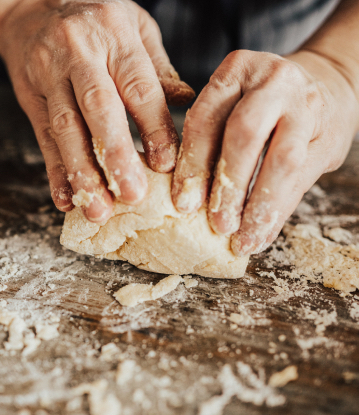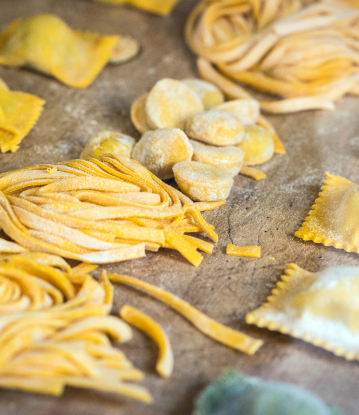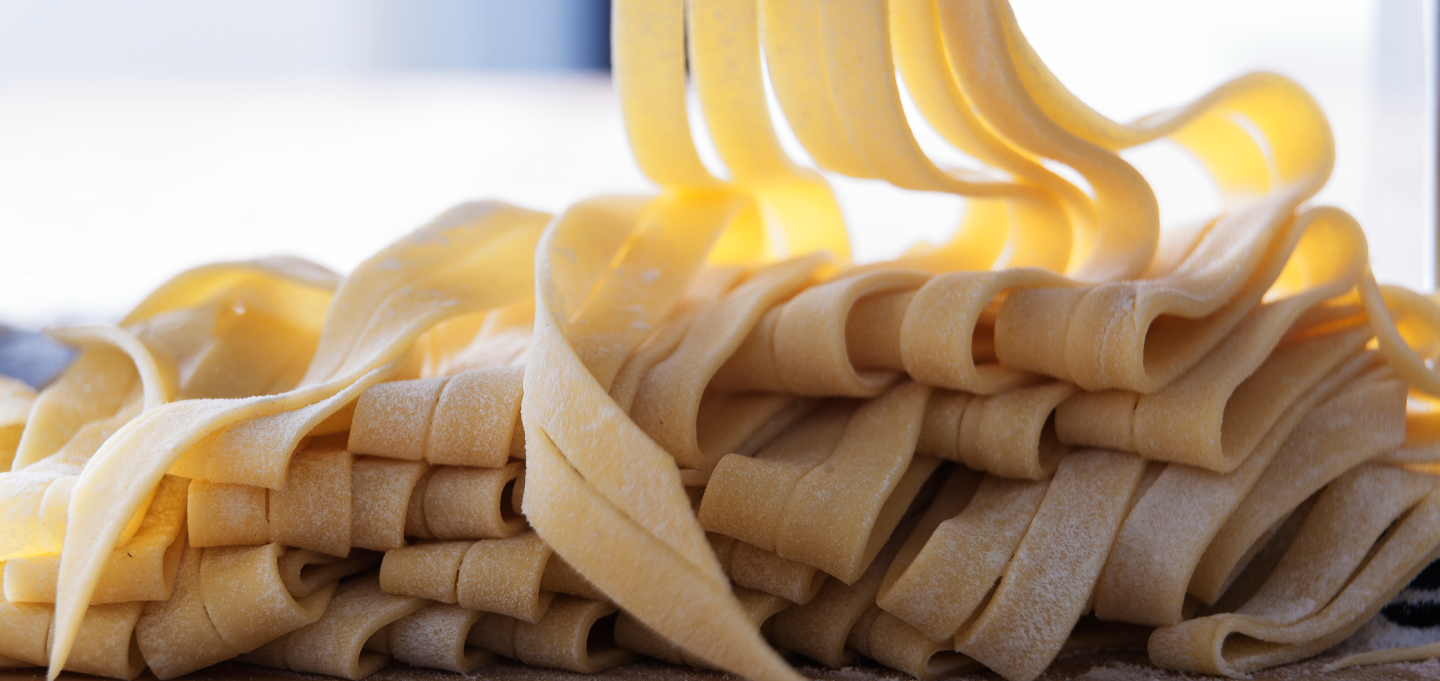


SUPPORT
Pasta is a broad term for the category of food that is commonly made from a combination of grain flour and water. Pasta can be made from a variety of grains or other milled material, such as legumes, and is formed into a wide assortment of shapes and sizes. Macaroni products are defined as food made from wheat and water, with egg whites added to some varieties. Additional categories are enriched, vegetable and whole wheat macaroni products. Noodle products differ from macaroni products in that they must contain whole eggs or yolks.
Our date code is set up in two different formats:
1. MMDDYY with the first two digits representing the month, the next two the date and the last two the year. For example, 070116 would reference July 1, 2016.
2. DD MMM YYYY with the first two numbers representing the date, the next three representing the month, and the last four the year. For example, 01 JUL 2016 would reference July 1, 2016.
In both formats, the letter and number following the date code represent the shift and facility in which the product was made.
We recommend that our products be consumed by the date noted on the package as the “Best By” or “Best Before” date to guarantee freshness.
Pasta shapes can certainly be interchanged. However, the “right” pasta shape can complement a particular sauce and enhances the taste and appearance of the finished dish.
In a large pot, boil 4 to 6 quarts of water per pound of pasta. (Adding salt is optional.) Gradually add pasta, stirring to separate it and return to a boil. Boil uncovered, stirring occasionally until desired tenderness. Drain. Serve immediately. When using cooked pasta in a recipe that requires additional cooking time, like macaroni and cheese or noodle casseroles, reduce the boiling time by 1 to 2 minutes.
“Doneness” really depends on your personal preference. Start by checking for doneness at the minimum recommended cooking time on the package. Test by tasting a single piece. Pasta should be “al dente” (“to the tooth”) or tender with a slight bite or firmness.
Unfortunately, it’s not that easy. The pasta will continue to cook in the hot water and become mushy if you leave it in water for too long.
If you aren’t ready to serve the pasta just yet, you can toss the pasta with a little oil or butter to keep it from sticking together. If it gets cold while you’re finishing your dish, you can dunk it in a pot of warm water for a few seconds to bring it back to temperature.
Pasta will absorb the sauce if left standing for even a short period of time, so we recommend adding your sauce immediately before serving.
Unless it’s a pasta product designed to be cooked in the microwave, we don’t recommend using your microwave. Pasta needs boiling water to cook properly and the microwave isn’t suitable for that.
Cooked pasta without sauce can be dunked in a pot of hot water (preferably boiling) for about thirty seconds to bring it back to temperature. Cooked pasta and sauce can be reheated in the microwave.
Yes, lasagna noodles must be cooked before layering your lasagna, unless you’re using our Oven-Ready Lasagna or a recipe developed for uncooked noodles. Those recipes typically contain extra liquid to cook the noodles during baking.
Yes, you can add dry pasta and let your soup do the cooking. You might want to add extra liquid (broth, water, etc.), since the pasta will absorb some.
Each pasta shape has a recommended cooking time to achieve the best results, since they vary in thickness or length. Be sure to follow the directions on your package.
Doneness of pasta depends on your own preferences, so we give a range of cooking time that’s appropriate for most cooks. If you prefer a bit more bite to your pasta, use the shorter cooking time. In addition, pasta continues to cook after you remove it from the boiling water for a few more seconds, so finding the perfect time is as individual as you are!
Pasta should be stored in a cool, dry place like your pantry, and unopened, it can last there for up to two years. If you live in a humid, warm climate, consider storing your pasta in a plastic zipper bag or other sealable container to keep moisture away from it. It’s also okay to keep an opened box of pasta in your pantry for a couple of weeks, provided it stays in the box!
Unopened pasta can last in your pantry for up to two years, but it’s best to follow a ‘first-in, first-out’ rule: always start with the package you’ve had in your pantry the longest. This way, you always know your pasta is as fresh as it can be.
All leftovers should be stored in a clean storage container and refrigerated within two hours. You may refrigerate leftover pasta for up to 3-5 days. For baked dishes like lasagna or stuffed shells, those can be prepared ahead of time and frozen until you’re ready to enjoy them. For best results, try these tips:
Lasagna: Assemble your lasagna in a baking pan as your recipe directs, omitting any cheese from the top. Do not bake it. Cover your pan with heavy-duty foil or freezer wrap, or place the entire pan into a large zipper freezer bag. Freeze for up to 2 months. When you’re ready to enjoy it, thaw your lasagna in the refrigerator for up to 24 hours. Remove foil, plastic bag and any other wrapping. Cover with foil and bake as directed, removing the foil when your recipe calls for it. Check your lasagna to make sure the internal temperature reaches 165-185 degrees. And don’t forget to add the last layer of cheese to the top!
Stuffed Shells: Cook jumbo shells as directed on the packaged and fill as desired. Place filled shells on a large baking sheet, cover with plastic wrap and freeze for several hours or until frozen. Move frozen shells to a sealed container or zipper freezer bag and return to the freezer until you’re ready to enjoy them. Meat or cheese-filled shells can last up to 3 months in the freezer. When you’re ready to enjoy them, remove the desired number of shells from the container and place in a baking dish. Spoon sauce generously over the shells, cover and bake in a 350-degree oven for 20-30 minutes or until the internal temperature reaches 165-185 degrees.
We have a number of different recipes for different varieties, but use a variety of high quality ingredients, including 100% semolina from Durum wheat grown only in North America, vegetable blends such as sweet corn, carrots and squash, and eggs.
Semolina is the key ingredient in the finest pasta. It is ground from Durum wheat and slightly yellow in color.
Durum wheat is the hardest of all wheat classes. There are a number of different varieties of Durum wheat, of which some are coveted for making pasta due to their high protein content, strong gluten strength and golden color.
One hundred percent of our Durum wheat is grown in North America, in three major regions: the upper Midwest, the lower Southwest, as well as parts of south-central Canada. These regions provide the ideal conditions for growing the particular varieties of wheat we use.
We don’t grow our own wheat, but we work closely with suppliers to ensure the highest quality crop year after year.
Our facilities are vertically integrated, meaning that we have full control of the wheat from the suppliers all the way to our facilities. There, it is milled into Durum semolina and flour, made into pasta and delivered to customers.
Milling our own Durum wheat allows us to control the quality and ensure our pastas are made from 100% North American-grown Durum semolina or Durum wheat flour. Semolina is not the only ingredient obtained in the milling process; we use some of the whole wheat in our whole grain products, some parts are used in the production of other types of food and some goes to local farms for use as animal feed. We strive to minimize waste, making our mills and facilities very sustainable.
For a product to be called “whole wheat,” the grain must be 100% whole wheat, meaning no refined semolina or wheat flour, or other grains, are used. Products can be called “whole grain” if they are made using whole wheat or other whole grains, such as rice, barley, corn or quinoa. Mueller’s 100% Whole Grain Pastas are made using only whole grain flour.
Enriched macaroni products are defined by the U.S. Food & Drug Administration, who mandates vitamins and minerals lost in the milling process must be added to the finished pasta. The current enrichment includes: Niacin (Vitamin B3), Iron, Thiamin Mononitrate (Vitamin B3), Riboflavin (Vitamin B2) and Folic Acid, all of which are part of a healthy diet.
Our packages contain an accurate listing of the ingredients in our products. If an allergen, such as wheat or egg, is present in our pasta or noodles, it is declared on the label. In addition, we do not use peanuts/tree nuts, milk, soy, fish or shellfish in any of our facilities.
We follow the U.S. Food & Drug Administration Final Rule defining the term “gluten-free.” While we do not have dedicated equipment for Mueller’s Gluten Free Pasta, we have a very detailed protocol in place to prevent cross-contamination and ensure safety for consumption. In addition, our gluten-free products are certified by the Gluten Intolerance Group, which assures that the finished product contains 10 parts per million or less of gluten.
No, Mueller’s Pasta does not contain sulfites.
All of our products are kosher. Look for the Kosher symbol on the package.
The flour used to make our pasta is neither bleached nor bromated.
A serving of pasta is two ounces (56g) of dry pasta. When measuring dry pasta though, it’s not easy to get the exact amount. Depending on the shape, pasta will approximately double in size when cooked, so the amount of cooked pasta can vary.
For smaller shapes like penne, elbows, rotini, and bowties, approximately ½ cup of dry pasta is two ounces, so that’s a good rule of thumb. A 12-ounce box of these shapes will have six servings.
For long pastas like spaghetti, angel hair, linguini and fettuccini, your best bet is to hold the pasta on end to measure it. Two ounces of dry pasta is approximately 2/3 of an inch across, or one serving. A 16-ounce box of these shapes will have eight servings.
Campanelle
Shape: ruffled, delicate cone shape
Pronunciation: kampa-nell-e
Italian for: “Bellflower” or “little bells”
Recommended sauce pairings: thicker sauces in everyday recipes and casseroles
Originally rolled by hand, campanelle lends a beautiful visual element to just about any dish.
Elbows
Shape: Short tubes with a slight bend in the shape
Recommended sauce pairings: meat, cream, seafood or vegetable-based
Adults and kids alike enjoy this shape in the American favorite, Macaroni & Cheese. Additionally, because this shape is hollow, it pairs nicely with a variety of sauces.
Fettuccine
Shape: Long, flat shape
Pronunciation: feht-tuh-CHEE-nee
Italian for: “Little ribbons”
Recommended sauce pairings: meat, cream, cheese, seafood, vegetable or oil-based
Because of its shape, fettuccine pairs nicely with full-bodied sauces.
Gemelli
Shape: S-shaped strand twisted into a spiral
Pronunciation: JE-mele
Italian for: “Twins” or “unicorn horns”
Recommended sauce pairings: just about any type of sauce
This spiral-shaped pasta appears to be two thin tubes twisted around each other, but is actually an S-shaped strand twisted into a spiral. Its twists and spirals give it a refined look while staying al dente.
Lasagna
Shape: Broad, flat, rectangle
Pronunciation: luh-ZAHN-yuh
Italian for: “Cooking pot”
Recommended sauce pairings: meat, cream and vegetable-based sauces
Put a creative culinary spin on your next meal. This shape is popularly used in recipes that require baking. Fillings might include: meat, ricotta, seafood, chicken or spinach.
Mafalda
Shape: Flat, ribbon-like
Pronunciation: ma-FAL-da
Italian for: “Little queens”
Recommended sauce pairings: delicate butter- or oil-based sauces
Narrower than lasagna but with similar rippled edges on both sides, the flat surfaces of mafalda match well with sauces used on linguini and fettuccine, and lend a new sophistication to a favorite recipe.
Penne
Shape: Hollow tubes. Ends are cut at a diagonal so they are pointed.
Pronunciation: PEN-nay
Italian for: “Quills” or “feather”
Recommended sauce pairings: chunky meat, chunky vegetable, cream or oil-based
Penne compliments virtually every sauce and is exceptional when paired with a chunky sauce. Penne is ridged and ideal to lock in flavor. This shape is great for baking dishes, too.
Rotini
Shape: Short, tight, spiral pasta
Pronunciation: roh-TEE-nee
Italian for: “Twist”
Recommended sauce pairings: meat, cream, vegetable and oil-based
Originating in Northern Italy, this shape pairs nicely with sauces full of flavor. The tight spiral locks in the flavor, allowing the shape to pair with both simple and sophisticated sauces. Children enjoy this fun shape. These shapes are also great when used in pasta salads.
Shells
Shape: Variety of sizes, shape of a seashell
Recommended sauce pairings: meat, cream, vegetable and oil-based
Put a creative culinary spin on your next meal by adding shells to a variety of dishes. Fill large shells with meat, cheese, seafood, chicken or vegetables. Large shells are good for baking dishes. Toss mid-sized shells with chunky sauces. Add small shells to soups, pasta salads or casseroles.
Spaghetti
Shape: Long, thin, round shape
Pronunciation: spuh-GEHT-ee
Italian for: “Little strings”
Recommended sauce pairings: meat, seafood, vegetable or oil-based
Spaghetti, a staple of traditional Italian cuisine, is one of the most versatile and popular shapes. Spaghetti shapes complement a variety of sauces.
Trottole
Shape: Resembles a child’s spinning top
Pronunciation: TROT-tole
Italian for: “Spins”
Recommended sauce pairings: Thick sauces or vegetable soups and stews
Originally rolled by hand around an umbrella stick, this curly rolled pasta was often left to dry in the warm Italian sun.


Contact Us
Browse the FAQ for answers to common questions, or use the contact form to reach out directly.
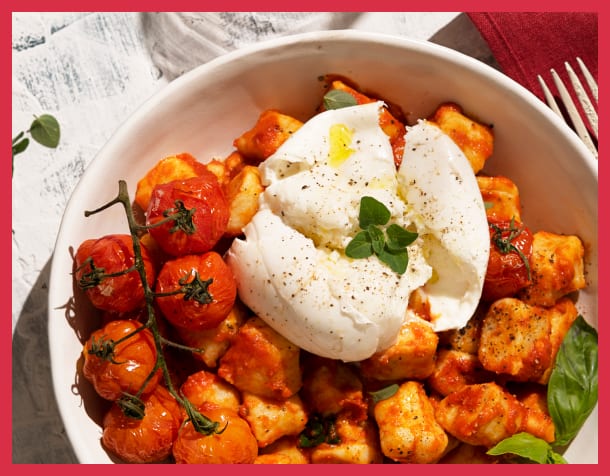
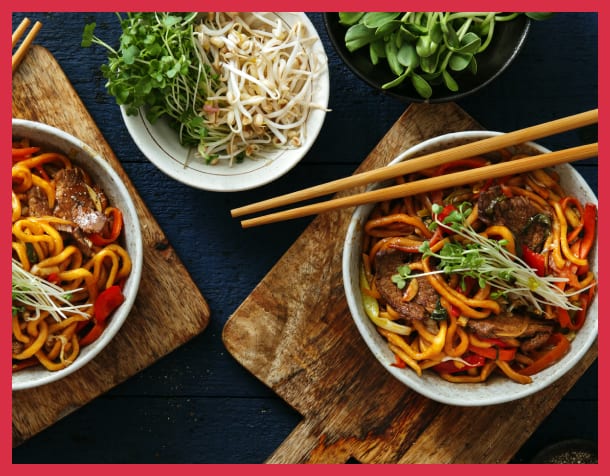
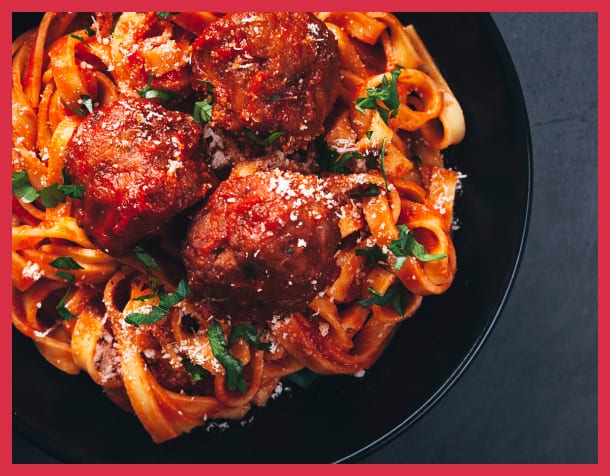
Follow us
Time to stock up?
Pick up your favorite Mueller’s pastas at a store near you or find us online.


Making meal time
a good time since 1867
A family favorite across the United States, Mueller’s Pasta has sparked simple moments of joy for generations. Crafted with care using the finest ingredients, Mueller’s is the original American pasta.
